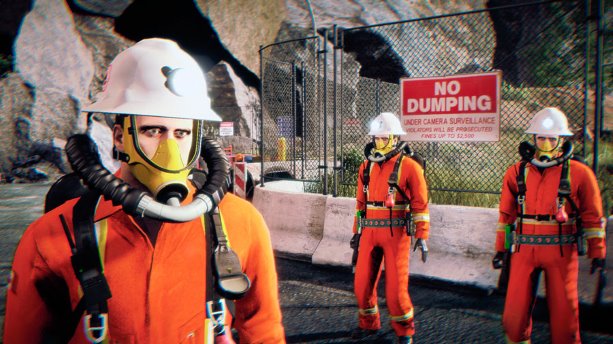Once dismissed as a video game novelty, virtual reality (VR) technology is changing how safety training programs are delivered.
Some of the breakthrough development is being done in Sudbury, Ont., at the Northern Centre for Advanced Technology (NORCAT) where, for the last three years, a team has been creating a VR simulation of a mine with the intent to train mine rescuers.
The simulation has debuted as a proof of concept and now the team is working to build it out into a more robust and interactive system, says Ed Wisniewski, director of software development, IT and facilities at NORCAT.
Similar VR systems for construction safety training are being developed in the United States and Australia and they all share the common goal of allowing new workers to be immersed in a dangerous place to see and experience the risks while remaining absolutely safe. This type of experiential learning is invaluable in getting the safety lessons across and is more likely to be absorbed, especially by a generation growing up with video game technology, Wisniewski says.
He has been at NORCAT since it opened more than 22 years ago and says while VR was toyed with back in 1995, the technology was clumsy and expensive.
Over the last few years both the cost of the VR displays — it can work on many cellphones mounted into a pair of goggles — and the computer software and hardware needed to drive it have decreased. So too have the costs of VR cameras to capture 360-degree images.
"We started again about three years ago but there was major pushback," he explains. "The safety people from the mines basically shut us down and shook their heads, saying ‘safety is not a game.’ "
Sudbury, of course, is a mining epicentre and so it made sense to look at using VR, but because it was built on a video game software engine it did have a similar appearance and the industry wasn’t playing along.
"The whole meeting was derailed," he said.
So, NORCAT upped its game, bringing in a highly skilled artist to create more realistic animations and training him in computer programming to render the images in VR.
The team chipped away at the concept, creating 3-D tours of two major mining operations in the Sudbury area, Vale and Glencore.
"We created an orientation program so that new arrivals could ‘walk’ to various locations as they would take in orientation," said Wisniewski. "All the key points were there, the mustering location in the event of an incident, the first aid stations, that kind of thing."
With that they reached the tipping point and the health and safety representatives bought into the concept.
Since then the team has also developed a training program for Ontario Mine Rescue, the rapid response team that is called in the event of an incident at a mine.
"Normally these people train with simulated events," he said. "They can’t have a fire in a mine so they have Christmas lights. They train hard but it’s not real."
The simulated mine rescue training program allows up to five mine rescuers to work as a team, displayed as avatars in the VR arena, which is a lifelike rendition of a mine.
Like a video game, they have to accomplish a set of tasks in the correct sequence to complete a successful mission.
"In video games it’s really about completing a series of tasks to beat the game and each time you fail you learn how to avoid that the next time as you go back and then up through the levels," he says.
Ultimately NORCAT is developing a system in which participants wear a version of their special rescue boiler suit fitted with sensors and stand on 360-degree treadmills that track their movement.
"They would also normally wear Drager AirPacks on their backs, but for the simulation we gut them and put the computer technology inside them," said Wisniewski.
"So physically it feels very much like being in a mine with all the equipment on."
VR headsets are the next challenge and the team is looking at using standing 270-degree curve thin screens or ways to integrate the VR display into a safety helmet.
Similar again to a video game, the rescue crew must work together, stooping to place an injured worker on a gurney, for example. While the current iteration is animated, future versions could be shot with a VR camera that can be as inexpensive and innovative as using GoPro VR units in six camera arrays, costing just a few hundred dollars, Wisniewski adds.
With their core software platform in place NORCAT is in talks with other sectors.
"We’ve been approached by one of the railways, for example, about doing something around their yards and equipment," he says.






Recent Comments
comments for this post are closed